Best Time to Cycle Italy
Seasons shift and Italy’s landscapes transform dramatically — explore our month-by-month and region-by-region weather guide to find your perfect cycling season.
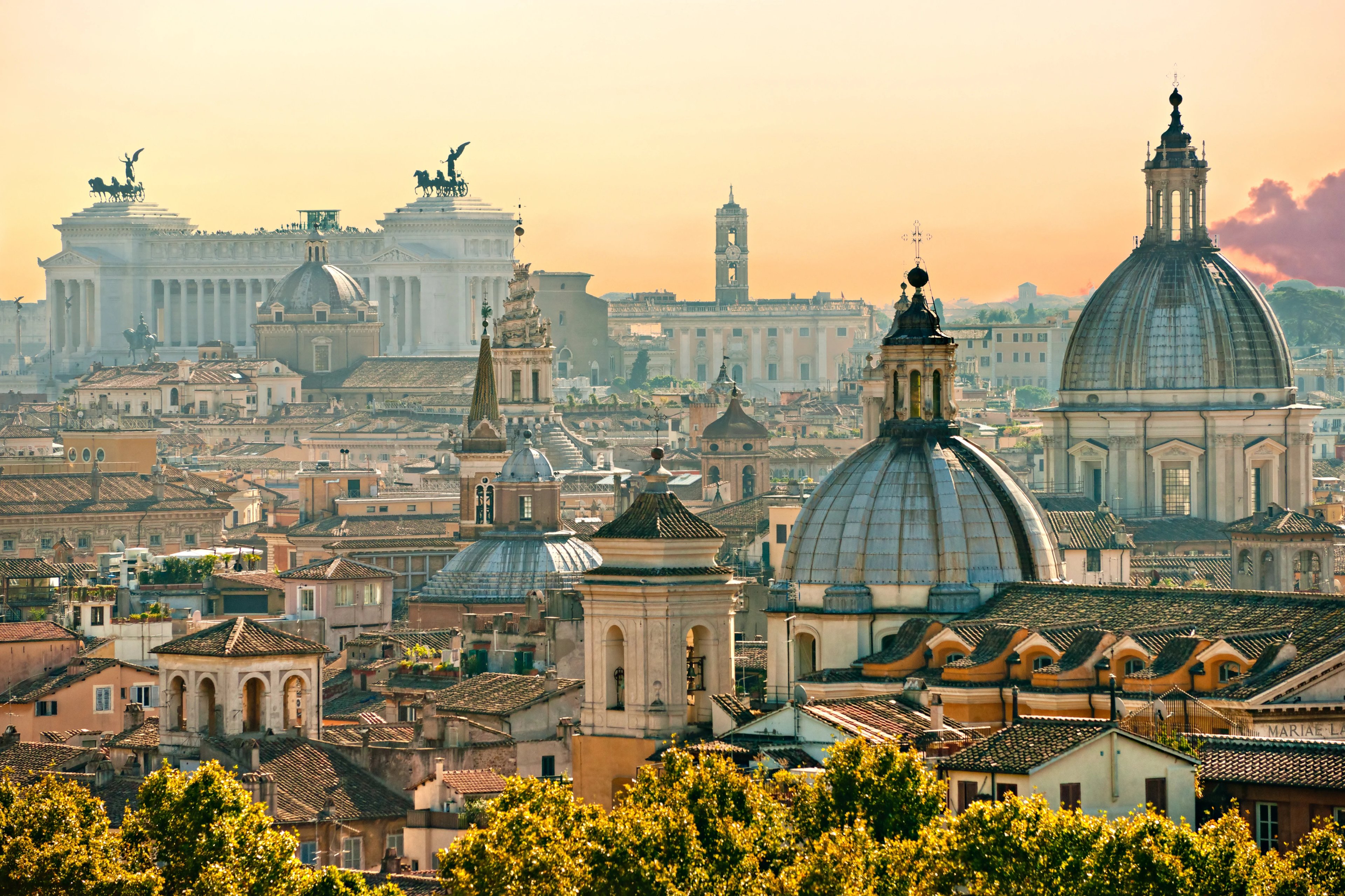
Cycling in Italy is a year-round possibility — but the experience changes dramatically by the season and the region.
Understanding Italy’s weather patterns can make the difference between a good trip and an unforgettable one.
What to know at a glance?
- Cycling is possible year-round – best conditions vary by season & region
- Spring: Mild and green — perfect across most regions as mountain routes reopen
- Summer: Best for the Dolomites and Alps; hot and crowded in the south
- Autumn: Warm, golden, and calm — ideal for Tuscany, Veneto, and Puglia
- Winter: Cold in the north; Sicily and Sardinia stay mild and inviting

Each season paints a different picture of Italy — from alpine snow to sunlit coastlines. To help you plan your ride, here’s how cycling conditions unfold by months and regions across the country.
Month-By-Month Breakdown
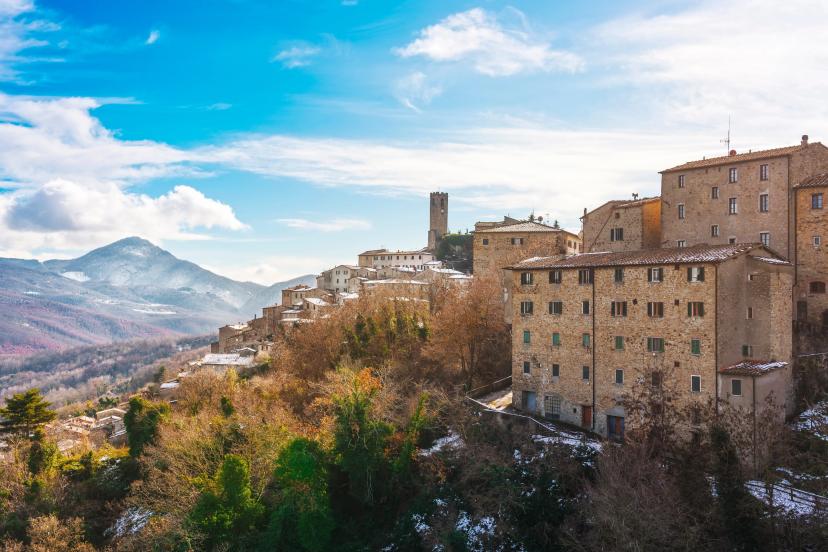
January - Italy
Winter rules most of Italy. Snow blankets the Dolomites, the Alps, and Apennine regions, closing major passes and making mountain cycling impossible. In the north, cold fog settles over the plains, while the southern coasts and islands enjoy occasional mild, sunny days around 10–15 °C. It’s a quiet time of year, best suited for those seeking off-season solitude or low-altitude coastal rides in Sicily and Sardinia.
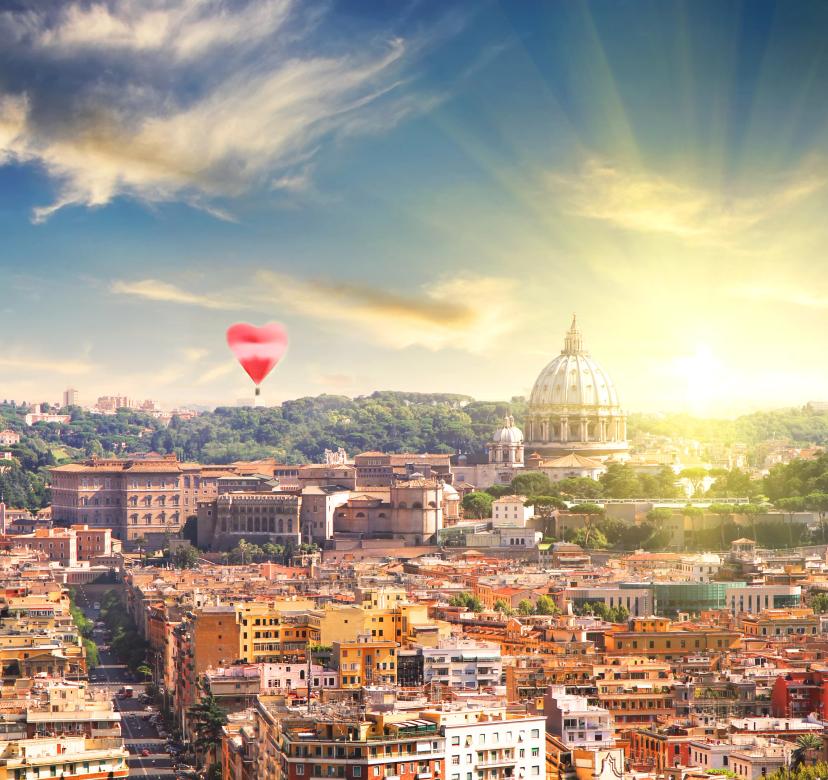
February Italy
Still deep winter in northern and central Italy, with cold and wet conditions. Southern regions start to see a few more dry, mild days, but weather remains unpredictable. Coastal areas of Puglia and Sicily may allow for comfortable short rides, yet inland and mountain areas are mostly unsuitable. It’s a calm, uncrowded month—great for planning rather than pedaling.
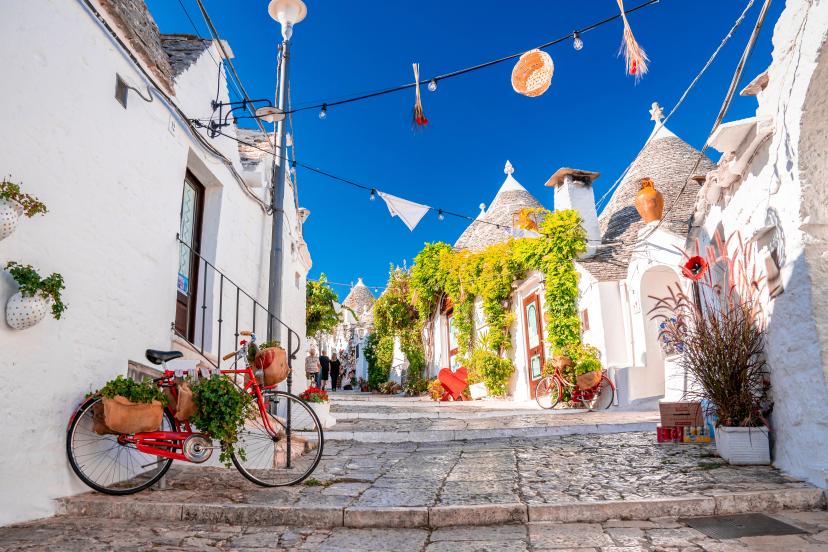
March Italy
Spring begins to stir. The first wildflowers appear in Tuscany and Veneto, and temperatures slowly climb to 12–18 °C in many lowland areas. The north and mountains remain cool, with lingering snow at higher elevations, but southern Italy and the islands start to shine for early-season rides. Expect some rain and fresh mornings, but also a sense of renewal across the landscape.
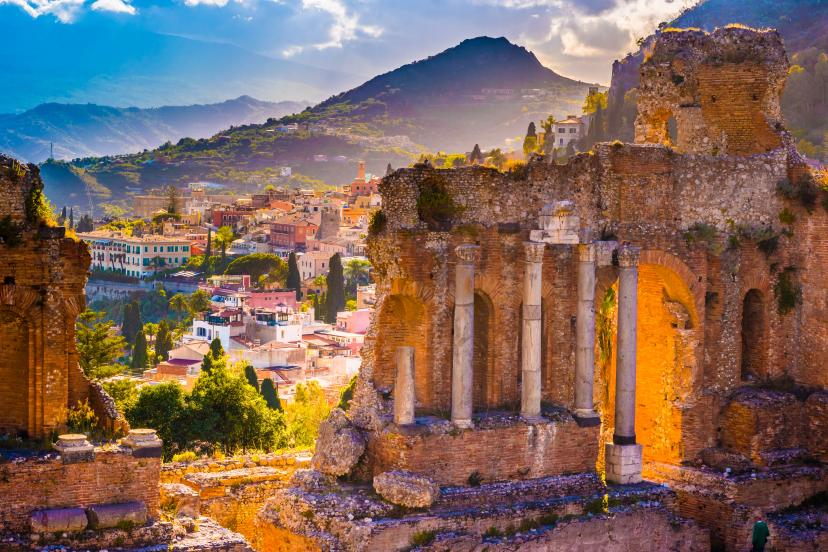
April Italy
The true start of the Italian cycling season. Days grow longer, greenery returns, and temperatures settle comfortably between 15 and 20 °C. Low and mid-altitude routes are ideal now, from the Tuscan hills to the Veneto plains and the shores of Lake Garda. Alpine roads may still be closed, but the rest of the country is in full bloom—perfect for relaxed rides through vineyards and countryside lanes.
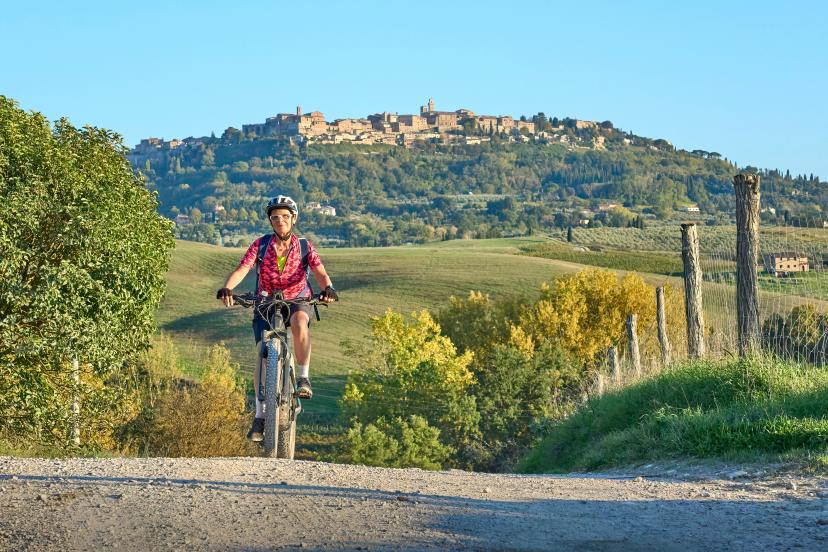
May Italy
One of the very best months to cycle in Italy. The weather is warm but not hot, ranging from 18 to 25 °C, and almost all regions are accessible. The Dolomite passes start to open toward the end of the month, while Tuscany, Puglia, and Sicily are at their most colorful and pleasant. Tourist numbers rise slightly but roads remain manageable—May is prime time for both mountain and cultural cycling.
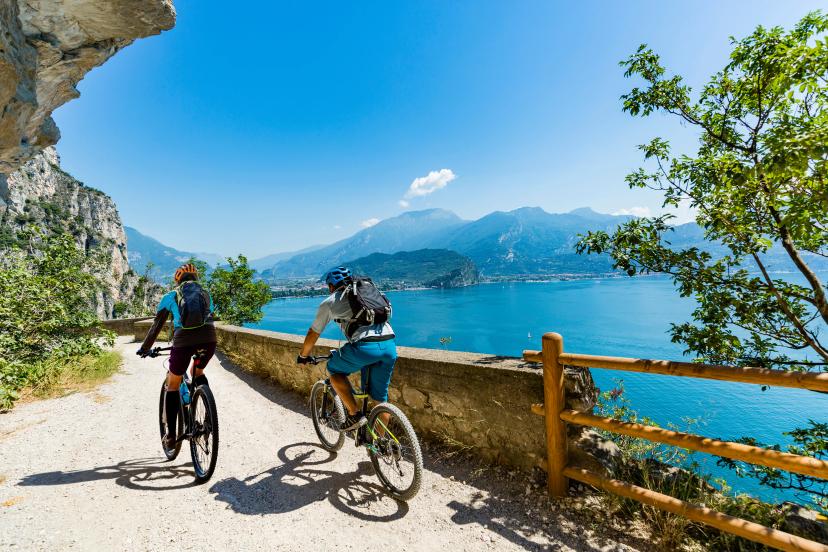
June Italy
Early summer brings long daylight hours and fully open mountain routes. High-altitude rides in the Dolomites and Alps are spectacular now, while Tuscany and Veneto begin to feel warmer, reaching 25–30 °C. Southern regions can be hot but manageable with early starts. Expect occasional afternoon storms in the mountains, but otherwise bright and settled conditions—ideal for ambitious riders.

July Italy
Peak summer—and peak energy. The mountains are in perfect shape for cycling, offering cool air and endless alpine views. In contrast, the plains, lakes, and coastal areas can reach 30–35 °C or more, making morning and evening rides essential. Tourist traffic is heavy in popular destinations like Lake Garda and Tuscany, so planning ahead and seeking quieter routes pays off.

August Italy
Italy’s warmest month and the heart of holiday season. Expect hot days across most of the country and busy roads in resort areas. Temperatures often exceed 30 °C, especially in the south, though alpine routes remain comfortable. Many Italians take vacation in mid-August (Ferragosto), so some local businesses close while tourist areas stay crowded. Stick to mountains and coastal routes for the best experience.
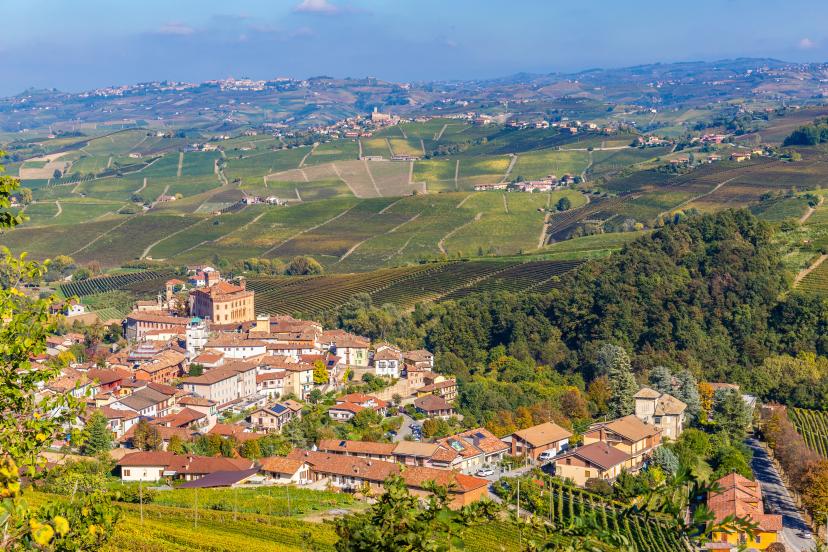
September Italy
A dream month for cyclists. The heat softens, skies are clear, and the crowds thin out. Average highs sit around 22–27 °C, and most mountain passes stay open until late in the month. Vineyards turn golden, making rides through Tuscany, Veneto, and Piedmont especially scenic. Sicily and Puglia remain warm enough for swimming after your ride—September truly offers the best of both worlds.
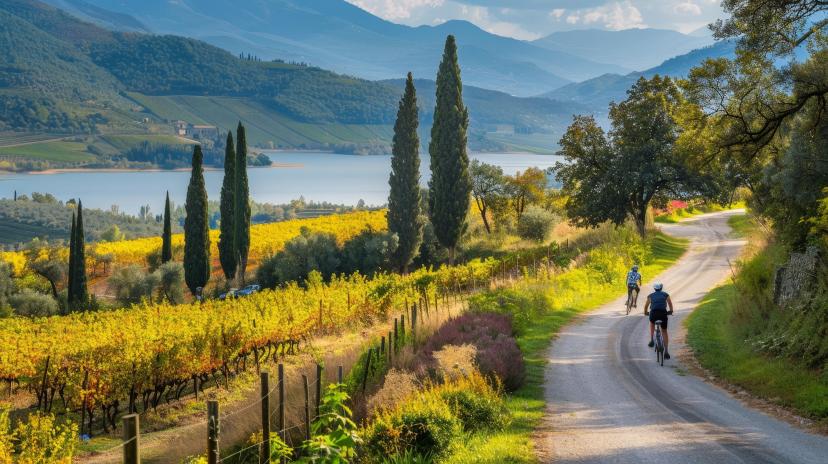
October Italy
Autumn arrives gently, painting the hills in gold and amber. Days are cooler but still pleasant, around 15–22 °C, especially in central and southern Italy. Rain becomes more frequent in the north, and some alpine passes begin to close by the end of the month. It’s harvest season, with festivals in wine regions and perfect light for photography—ideal for cultural and culinary cycling.

November Italy
The cycling season slows down. Shorter days, rain, and cooler temperatures limit options in much of the country. Southern Italy and the islands still see some mild days, but weather can shift quickly. This is a good month for city cycling or low-altitude touring, but most riders transition to off-season training or warmer destinations.

December Italy
Winter settles in once again. Snow and ice dominate the north and mountains, while the south and islands experience mild but unstable conditions. Average highs range from 8–15 °C in Sicily and Sardinia, with occasional sunny breaks between rain fronts. It’s a peaceful time to visit for those who prefer quiet roads and don’t mind a chill in the air.
Prime Cycling Times by Region
Of course, Italy’s weather isn’t one-size-fits-all — it shifts dramatically between the regions. To help you choose where to ride, here’s when each region shines at its best.
Dolomites & the Mountains

Best Time: June to early October
Why: High passes and iconic climbs are only reliably open in summer once the snow melts.
Climate: Alpine — cold winters, cool springs, mild summers, and unpredictable storms.
What to Expect: In summer, valley temps often reach 15–25 °C; at altitude, 5-15 °C is common. Outside this window, snow or frost can close roads.
What to Watch Out For: Afternoon thunderstorms, rapid weather shifts, and early/late season snow or ice at higher elevations.
Pro Tip: Plan around mid-July’s Maratona delle Dolomites (first week of July) when many roads are open and cycling energy is high.
Lake Garda & Lake Como
.png&w=1920&q=85)
Best Time: April to early June, and September to mid-October
Why: Less heat, more stable weather, and fewer crowds. Full summer is possible but can be intense.
Climate: Mild, with lake influences moderating extremes. Summers can heat up; springs and autumns are comfortable.
What to Expect: Pleasant 15–25 °C in shoulder months. In July/August, temps may rise above 30 °C in lower zones.
What to Watch Out For: Tourist overload in midsummer; midday heat in exposed areas.
Pro Tip: Use early mornings and evenings for lower routes; lakeside breezes often offer relief during heat peaks.
Veneto

Best Time: April to June and September – October
Why: Comfortable temperatures and manageable rainfall make spring and autumn ideal; summer is hot and busy.
Climate: Transitional — influenced by both alpine and Mediterranean patterns.
What to Expect: Spring and fall days often range 15–24 °C. Summer days in plains and lowlands may push above 30 °C.
What to Watch Out For: Thunderstorms in summer, traffic in tourist towns, and occasional humidity in lower zones.
Pro Tip: Combine Veneto with nearby mountain or lake routes in summer to escape the heat of the plains.
Sicilia & Sardinia

Best Time: March to June and September to October
Why: Mild weather lasts long here; summers are hot, but spring and autumn are ideal.
Climate: Mediterranean — mild winters, hot summers, dry conditions in mid-season.
What to Expect: In spring and autumn, temps often 18–25 °C; summers reaching 30–35 °C or more inland.
What to Watch Out For: Intense midday sun, interior heat, occasional strong winds, and limited shade in rural zones.
Pro Tip: Coastal or island rides in midsummer offer relief. In spring and autumn, inland climbs are more comfortable.
Piedmont

Best Time: May to June, and September
Why: These months blend comfortable temps, stable weather, and full access to hill and wine-country roads.
Climate: Continental with moderate influences from the Alps and Mediterranean.
What to Expect: Spring/fall days around 15–25 °C. In summer, lowlands may get hot, and storms can intensify.
What to Watch Out For: Heat spikes in July/August; thunderstorms in late summer; strong sun in open agricultural plains.
Pro Tip: Combine Piedmont with Alpine foothills to escape the lower heat during summer peaks.
Tuscany

Best Time: April to June, and September to early October
Why: The hills and countryside are most pleasant then; summer gets hot and bright, winter wetter.
Climate: Mediterranean / inland – warm dry summers, mild wet winters.
What to Expect: Spring and early autumn often hang in the 15–25 °C zone; summer may reach 28–32 °C. Rainfall peaks in spring and fall.
What to Watch Out For: Intense summer heat, tourist congestion, and afternoon storms in shoulder seasons.
Pro Tip: September is especially magical — harvest time, gentle light, and wide accessibility of agriturismi and routes.
Puglia

Best Time: April to June, and September to October
Why: Pleasant warm weather, fewer extremes, and good service availability.
Climate: Mediterranean — dry summers, mild winters, coastal influence.
What to Expect: In spring and autumn, temps range ~17–27 °C. Summer may hit 30 °C+ inland; winters can bring rain and cooler spells.
What to Watch Out For: Summer sun intensity, limited shade, and strong winds in certain coastal sectors.
Pro Tip: Focus on inland rural roads in spring/autumn; coastal stretches are more comfortable during heat peaks.
Where to Check the Weather
Italy’s weather can shift quickly between the Alps and the coast, so make sure to check local forecasts before every ride.
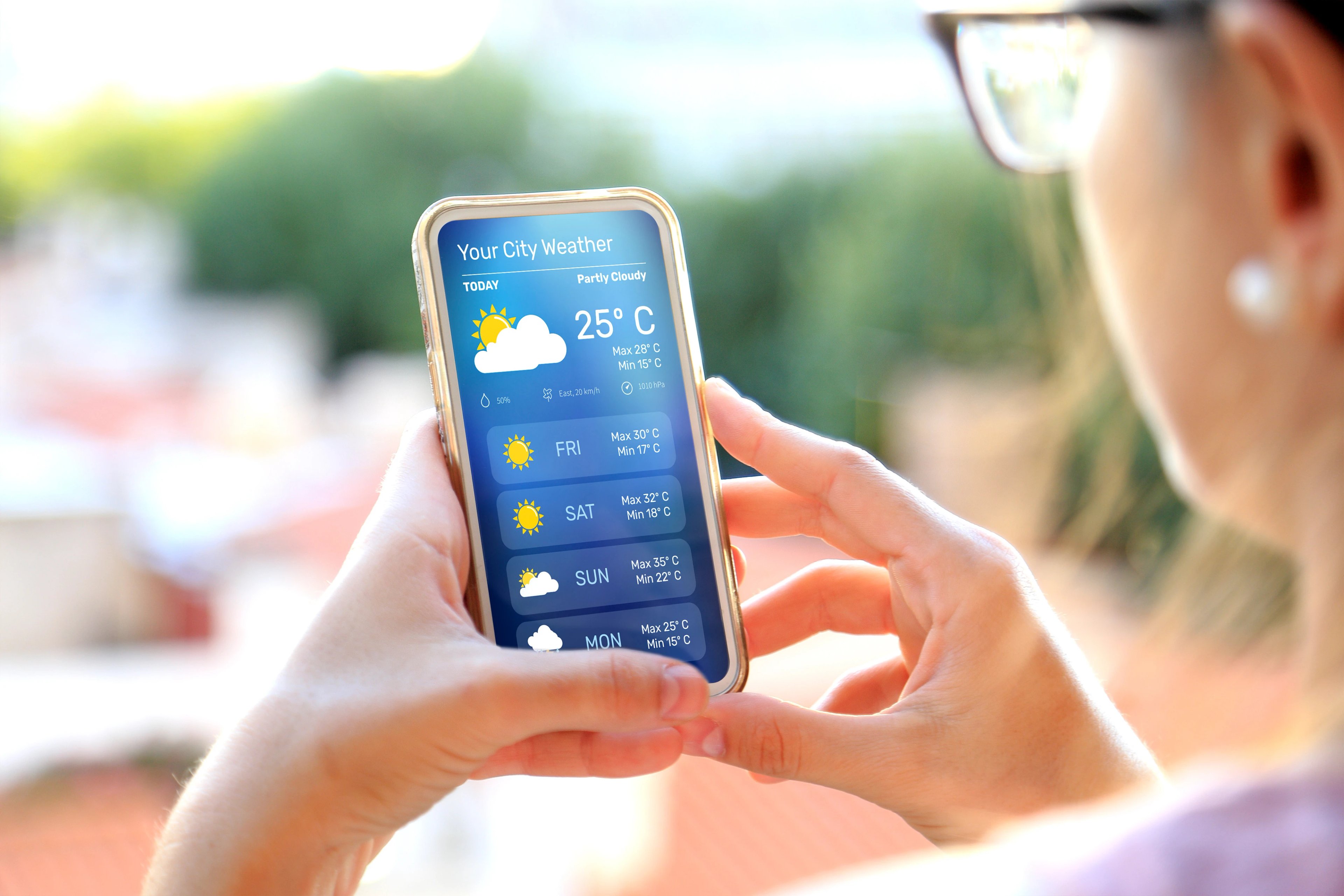
Here are two reliable sources to plan your cycling days:
- ItaliaMeteo – the official Italian meteorological agency, offering accurate regional forecasts, maps, and alerts based on national monitoring stations.
- Meteo.it – a popular, user-friendly site and app providing daily and long-range forecasts for every Italian town, including radar maps and precipitation alerts.
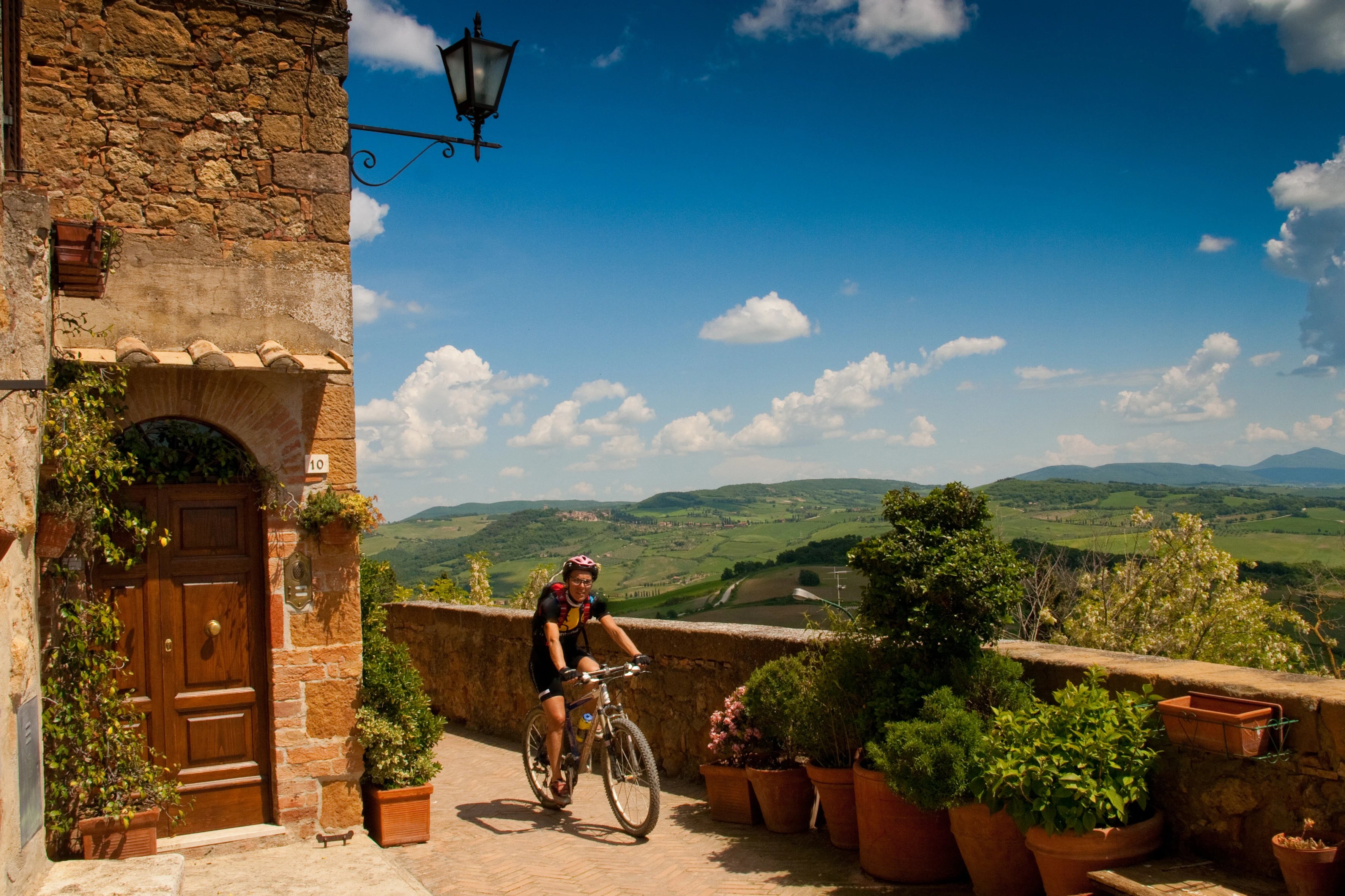
Italy’s weather keeps cycling exciting year-round. Warm springs, sunny summers, golden autumns, and mild southern winters mean there’s always somewhere to ride.
If you’re keen to learn everything you need to know about cycling in Italy, check out our ultimate guide, and get all the information in one place.
Ready to plan your trip? Get in touch and let us help you choose the best time and region for your Italy cycling adventure.

Hassle-Free
We handle itineraries, accommodations, and anything else you prefer not to deal with, so you can enjoy a carefree holiday.

Completely Customizable
Flexibility is our middle name — whether you want more or less, or just beyond ordinary, we’ll make it happen.

Book with confidence
We are a financially protected company, fully bonded and insured, keeping your money safe and allowing you to travel with confidence.

Unbeatable support
Our 24/7 customer support is where we show our passion, bringing you a better experience by making your well-being our number one priority.










.jpg&w=3840&q=75)
